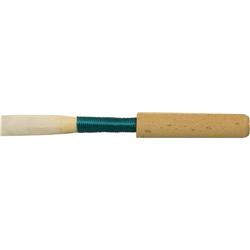Intermediate Oboe Students: Year # 2
Step One- Moving forward with intermediate skills
Intermediate students are using Book 2 material, have learned the basics of playing in the basic keys of Bb, Eb, F, and Ab, and are playing with good posture and with a more mature sound. Students are able to control the reed, take care of the reed, and adjust the cork to fit the well of the oboe. Students can tongue and slur using good articulation and know how good staccato and legato sound on the oboe.
Hopefully, oboist have method books with accompaniment via CDs so they know the melodies and tempos of the various exercises and tunes. Keeping a steady beat and playing with good rhythms is the heartbeat of excellent music performances.
Step Two- Playing in the upper, middle and lower registers
The middle register is easiest for the oboist to play consistently well. These are basically the notes on the staff of the treble clef (low Eb to octave key F). For the best sound play a low Eb and hold that open embouchure in place as you play up the Eb major scale using your air speed to control your pitch. Find the “sweet spot” on your reed that gives you the best sound on each of the notes.
The upper register starts with high G and continues to high C for intermediate players. Again, keep your embouchure open, direct your air up to the ceiling, keep the air speed moving fast, find the sweet spot on the reed for the best sound and play quarter note patterns between high G and high C. Be sure your top lip is firm, your bottom lip is dropped but still touching the reed with both your lips rolled under.
The lower register is the most challenging on the oboe because the instrument has a conical shape-bigger at the bottom and gradually smaller at the top. Oboes and saxophones have conical shape; while, flutes, clarinets, and bassoons have cylindrical shapes-the same size at the top and bottom of the instruments.
To play low D, Db, and C be sure your fingers are directly covering each key of both hands. If you take your reed off the oboe you should be able to buzz and low G. Play a low G on the oboe and then buzz a G on your reed. If the pitch is too high when you buzz take less reed in your mouth or carefully open the reed one side at a time to avoid cracking your reed. In this position you should be able to sound low D, Db, and C.
Step Three- Tonguing and slurring (good articulation)
Tonguing and slurring on the oboe give the oboe sound more color. When tonguing you can start the sound with a staccato, legato, or accented sound. All three sounds are triggered by the use of the tongue. Some students prefer a “T” sound while others prefer a “D” sound, but what is important is that you are starting the sound with your tongue on the reed as you blow your air through the oboe.
For short notes (staccato) the oboist needs to put their tongue back on the reed immediately after sound the note. This creates silence between notes. This silence can be of different lengths depending on the style of the music. The oboist needs to practice all different lengths of their staccato or short note playing.
Legato tonguing is like creating the sound of the violin bow where notes are tongued but notes are connected with no silence between them. Some oboists think that legato tonguing is like slurring with a slight touch of the reed with their tongue.
Starting notes with an accent requires more force of air with more forceful tonguing. There is usually space between accented notes for more emphasis.
As one cannot see an oboist physically tonguing the reed, one has to listen to the start of the sound to detect what needs to be changed, improved, or repeated with no changes.
When observing string and percussion students work with articulation one can see all the action when the players start and stop the sound; however, with wind students including oboists this aspect of their performance is invisible. Thus, listening to the desired effect with correct articulation is important for the best results.
In your Book II exercises and tunes
you will have many opportunities to review various techniques for tonguing and slurring. Ask your band director in school to check your tonguing and slurring. Listen to other students do the same on other instruments. When you hear a student or students playing with a good sound with their tonguing and slurring try to imitate that sound on your oboe.
The instruments that have best staccato sound are snare drum, pizzicato violin, piccolo, and oboe. Being able to play short notes that are spaced with silence adds an important color to the overall solo, ensemble, band, or orchestra sound.
